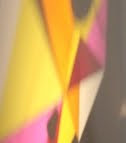

thumbing through some old AUDIO magazines circa 1960-64 i came across the top diagram picturing "a practical combined stereo output and crossover transformer", and my mental rolodex immediately brought to mind concept drawings (and the final built structure) of the monsanto house of tomorrow, that was installed in disneyland end of the 1950's. the concept sketch pictured below the transformer, comes from a rare "comprehensive engineering analysis" of the house and in particular, it's fibreglass parts. for more on the monsanto house, there are numerous images and articles about it online; but i am interested in the seemingly random association of these two things that my mind brought together unconsciously.
i'm always surprised by the suggestive nature of images, and their ability to bring to the forefront of the mind other images, visually related, yet seemingly disconnected in terms of conceptual or intellectual logic. what i love about these situations is that they tend to suggest a re-thinking about certain things individually, as well as opening new avenues of conversation between things that previously seemed unable to speak to each other.
when i first saw the transformer image, which was part of a larger group of related articles for hi-fi geeks who wanted to build their own equipment, i stopped to stare because formally it felt familiar. certainly, at this point, the number of pathways towards my own exploration of sonic and architectural conversation is relatively vast; but at no time had i ever thought about the physical objects of electronic sound generation (i.e. a home stereo system) in relation to the larger structures that generally house them (i.e. homes). a simple moment of eye wandering suggesting suddenly an un-thought-of relationship between amplified sound and the larger enclosed space of its listening.
in this slight slippage - pausing to look at a new kind of stereo transformer, and instead of "understanding" its meaning, being reminded of an experimental architectural structure - there begins a small thread, potentially tugged at from one end, towards new conversations birthed from a sudden and unexpected place. in my own past, similar "accidents" (such as seeing, in a work by joseph cornell, the circular presence of the moon as an audio speaker) have generated artworks, as well as deep internal conversations.
in a text from his book of hours, rilke says "hands must be simple and good to accept the offering". of course, he's talking about god and god's voice; but at the same time he seems to be suggesting a kind of openness, that i find quite related to cage's ideas regarding music and listening. if one's hands, or perhaps ears, are open to experience without expectation, then seemingly closed definitions and dead end discussions will continue to open and expand.
two eyes, two hands, two ears... sometimes it is the body of the seer, the thinker, or the listener, that is the connective tissue between two sounds that don't seem in harmony with each other, or two surfaces that feel a part of different worlds, or two images that don't seem, at first to have anything much in common.
Labels: hands, joseph cornell, monsanto house of tomorrow, r. m. rilke, sound and architecture
















